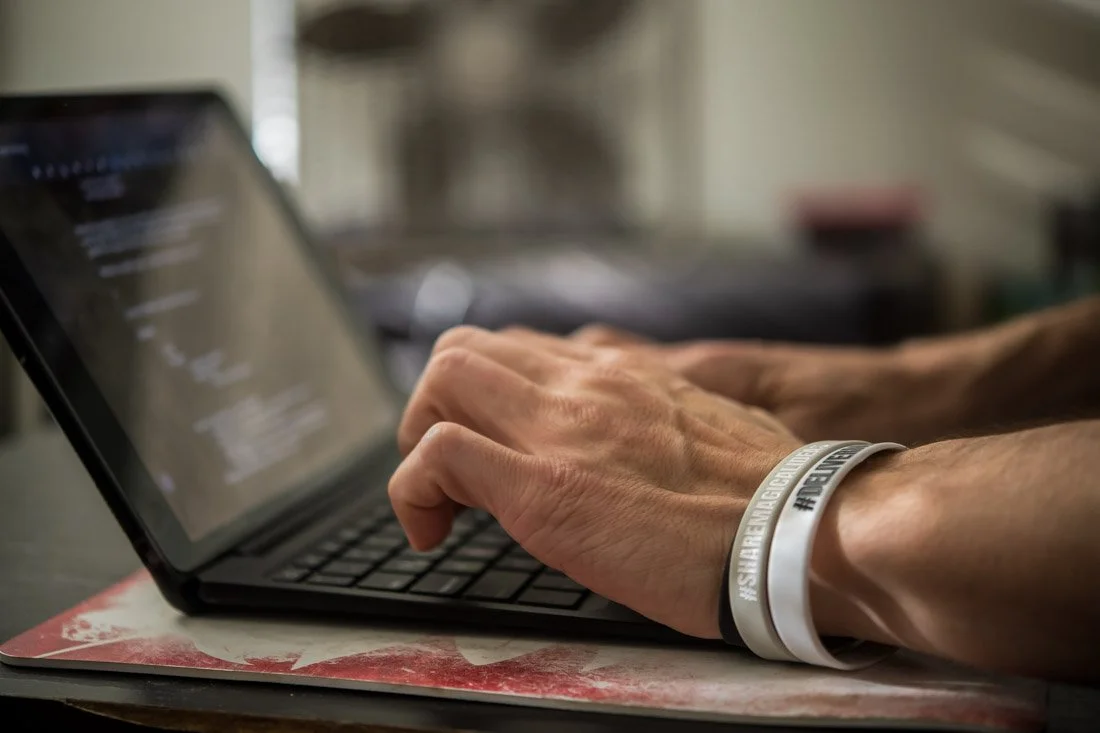Please don't do this during your next portrait session!
Avoid inauthentic portrait images at all costs!
One of the benefits of branded lifestyle portrait images is that it provides your tribe a fly-on-the-wall glimpse into your processes, business and life.
When you illustrate how you brainstorm, work, consult with clients, lead a workshop and produce your podcasts, that creates a unique opportunity for your tribe to connect with your messaging in a way that will resonate much more deeply with them.
Ultimately, this translates to them developing a sense of trust and familiarity with your thought leadership because you’re allowing them to see behind the curtain, presenting yourself confidently in action, doing what you do.
As I scour the interwebs, I see these types of branded lifestyle portrait images sprinkled throughout many thought leader's social feeds, and that’s awesome.
But, I’ve also recently noticed a trend of these types of images that slightly miss the mark, and does, in a way, hurt their brands.
In fact, I recently was hired by a thought leader to replace these very images with portraits that I am describing above because she recognized the danger in leveraging these types of portraits.
So, what are these portrait images that hurt, not help?
Well, in the case of my client, her photographer captured portraits of her sitting at a desk with a computer in front of her and her hands were on the keyboard.
So far, so good.
But, rather than capturing candid portraits of her on the computer typing and reacting through her facial expression to whatever she was engaging, she instead, was staring directly into the camera to her right while, ahem, FAKE SMILING.
Ugh, the fake smile was the topper - so bad for your brand, folks - stop doing that!!!!!
Fake smile aside, let’s think about this type of portrait logically for a second:
When you see a photo of someone sitting at a computer with their hands on the keyboard, the natural assumption is that they’re doing some type of work.
The camera, in this case, is assuming the fly-on-the-wall perspective of the viewer, which is not meant to disturb the action at hand.
The moment that the subject addresses the camera, the whole vibe of the shot changes from a lifestyle portrait to someone posing for a picture.
If you’re posing for a portrait, why would you have your hands fake typing at the same time? Does that make any sense?
It’s a confusing image that is mixing up two portrait styles, and defeats the purpose of having a computer in the image in the first place. Consequently, her portraits felt incredibly staged and inauthentic.
Did my client look awesome in the photo set?
Absolutely - lighting was awesome, her outfits looked great and the location was stellar.
But, this is a branded lifestyle portrait shoot meant to create images that serve as visual punctuation marks to her stories and messaging about her business and brand, not a personal portrait session.
That’s a big difference since looking pretty in your branded lifestyle portraits is the foundation of the session, not the overall objective.
Moral of the story?
Talk with your photographer before the session and let him/her know that you need not only a series of posed portrait images, but also candid, action images that lets viewers see how you work.
What is your opinion of all this?
PS - For those of you who aren’t in the know, I mail out these blogs 3x a week, and lemme tell you, they’re a real party, so, if you’d like to get in on this, sign up for it here and I’ll throw in a free gift for you...because I care, :)

